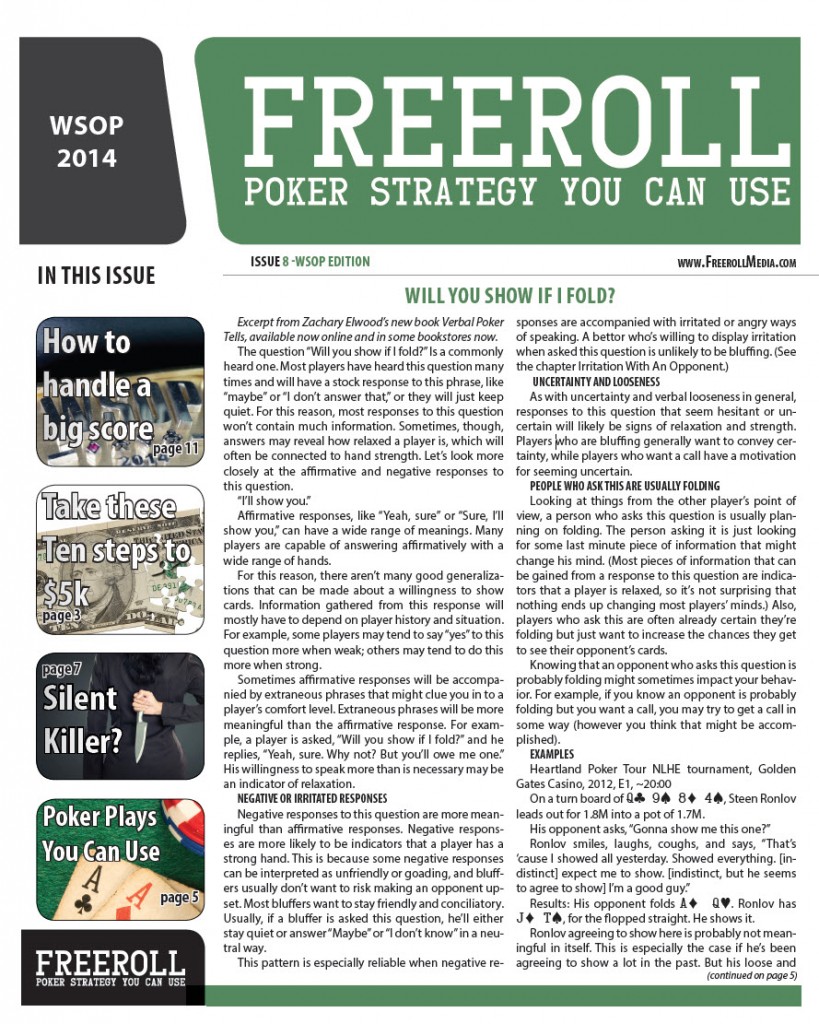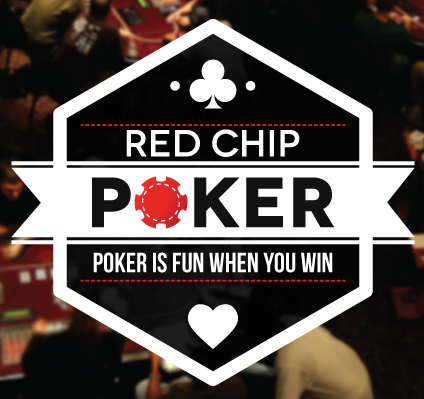Basic Street Projection
- By Andrew Seidman
- April 20, 2014
- Comments Off on Basic Street Projection
 Chapter Twelve of BalugaWhale’s Easy Game
Chapter Twelve of BalugaWhale’s Easy Game
Poker isn’t about making good decisions, it’s about making the best decisions. Once you’ve determined that you are able to make a value-bet or a bluff, there is another step you need to take before you actually make that bet. Before you make a bet, you need to consider whether or not you’d accomplish more by waiting until later. The question that I’m always asking myself is: “Is it better now or later?”
A common example of this: we call a raise with 33 from the blinds and the flop comes down T93. Normally, we’re in the habit of automatically checking to the preflop raiser, but let’s break down the process for a moment. If I were to ask you, “could you bet for value?” (implying a donk-lead) you would undeniably say yes—plenty of worse hands will call (think pocket aces, T9, or a host of others). However, not only will all of those hands bet when checked to (and will call a check-raise), but he will bluff many hands on the flop that he would have otherwise folded to a donk-lead. In this example, we end up check-raising and getting much better value on the flop than if we would have donked.
Often, we’ll ask ourselves if a bet is better now or later and we’ll decide that it’s better now. This usually the case when we’re the aggressor (i.e. it’s usually better to continue betting the turn for value if you bet the flop as opposed to going for a check-raise or check-call), but it can also occur when we’re not the preflop raiser. This topic is discussed in the chapter “Table Dynamics”, but we’ll look at it again quickly. A regular opens on the cutoff, a passive fish on the button calls, and we call in the big blind with 77. The flop is T97. Again, I ask myself, “Is it better now or later?” In this case, if I go for a check- raise, I risk it checking through and losing a street of value. On a board like T97, the regular isn’t likely to bluff very often (especially with a fish behind who’s likely to call him down), so we can’t count on his bluffs. Then, the fish (who in this example is passive) is unlikely to bet aggressively, even with something as strong as JT. However, a lead is likely to get calls from the regular (if he has a hand) and the fish (with most of his range). In this case, it’s better now than later, so we skip the check-raise and lead the flop.
The process works for bluffing too. Let’s say that we raise 97s in the cutoff and a reg in the BB calls. The flop is A84. Our opponents range consists of two things—hands that he’ll fold to a bet (33, for example), and hands that he won’t (AT, AJ, etc). So, we ask ourselves if bluffing works better now or later. Well, the hands he’s likely to fold on the flop, he’s likely to continue folding on the turn and river. When he checks with a hand like 33, it’s because he’s giving up—not much will change that. So, we don’t gain any value against those hands by bluffing the flop rather than a later street. However, when he has a hand like AT, he will often lead the turn for value (he won’t lead 33 as a bluff nearly as often). We can fold comfortably and actually save ourselves money in this case by waiting until later to make our bluff. This is used commonly and called a “delayed c-bet”. But, despite the fact that people make these bets commonly, they usually don’t realize that there’s a process that explains them. Understanding that process will be useful in situations far more complex than deciding whether or not to make a flop c-bet.
One such situation happened to me recently. I was sitting 200bb deep with an aggressive regular. He raised, and I reraised for value with A♠Q♠ on the button. He 4-bet (I expected him to reraise here with a wide range often) and I decided to flat (a detailed discussion of my choice to flat instead of 5-bet can be found in the chapter “Dealing with Polarized Ranges and Calling Big Bets OOP”). The flop was T♥7♥3♣. He c-bet, and I called (I was confident at this point I could bluff him off AK at some point in the hand, but I decided that it was better to wait until later). The turn was a J♦. He thought for a while, and then checked. I considered strongly going all-in on the turn here as a bluff (I had about a pot-sized bet remaining). However, I again decided to wait until later (using the same process as I used in the A84 example above). The river was a blank, and he checked. Now, I confidently shoved and he quickly folded. I think there was a decent chance that he would have hero-called with AK on the turn. But, once AK has completely missed the river, my bluff has more fold equity. In this case, waiting until later was better.
In a world of increasing aggression, sometimes it’s better to slow down and make your opponents play turns and rivers. People tend to feel increasingly uncomfortable as a hand progresses—they feel great about preflop, pretty good about the flop, so-so about the turn, and badly about the river. There are two reasons for this; first, they get more practice at preflop and the flop as fewer hands make it to the turn, and second, there are more variables on later streets that can confuse and bewilder them. With that in mind, it’s important that we always ask ourselves, “Now or later?” Sometimes we’ll find spots where “later” is definitely better. Those spots are what will make us creative and difficult to play against.


